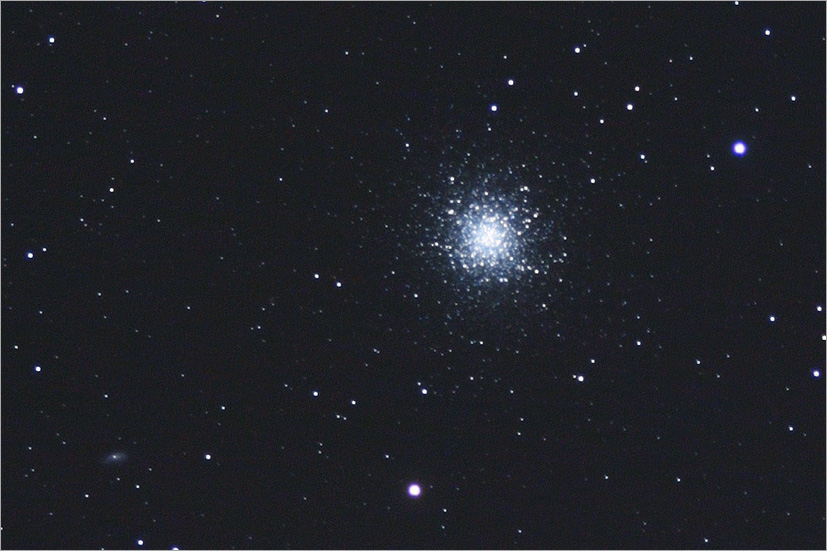
Tracked and Stacked
Globular Cluster M13
Because M13 is relatively large and bright, it is a fairly easy object to shoot. Here 10 frames are stacked together to smooth the sky background.
|
|
M13 is the Great Globular Cluster in the constellation of Hercules.
It is one of the largest and most beautiful globular clusters visible from the northern hemisphere.
At magnitude 5.8, M13 is visible to the keen unaided eye at a dark-sky observing site. It is located about 25,000 light years away. It has an apparent angular diameter of 15 to 25 arc minutes, depending on the size of the telescope used to observe it. This corresponds to a real size of about 145 light years. It contains hundreds of thousands of stars.
M13 was discovered in 1714 by Edmond Halley and catalogued by Charles Messier in 1764.
Galaxy NGC 6207 can be seen at the lower left. North is to the left in this image.
Image Data
- Lens / Scope: Stellarvue SV70ED ED doublet refractor
- Focal Length: 420mm
- F/stop: f/6
- Exposure: Stack of ten 2-minute exposures (20 minutes total exposure)
- Mount: Orion Sirius polar aligned German-equatorial mount
- Guiding: None
- Camera: Unmodified Canon EOS 1000D (Digital Rebel XS)
- Mode: JPEG
- ISO: 1600
- White Balance: Custom, set on sky background
- In-Camera Noise Reduction: Off
- Filter: None
- Temp: 60F
- Start Time: start 12:14 a.m. edt
- Date: April 25, 2009
- Location: Tuckahoe State Park, MD
- Calibration: None
- Processing: Standard in-camera JPEG processing. Stacked in DeepSky Stacker. Cropped, sharpened in post processing.